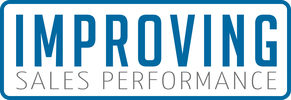|
Audience engagement is an illusive goal for many public speakers. My grandfather once told me that he started every presentation with a joke, to warm up his audience and break the ice. So here we go...
Knock knock. Who's there? Four different types of learners. Four different types of learners who? Are in your audience who came to be engaged, to learn and be inspired. Ok, so you're not rolling on the floor laughing, probably because it's not really funny. But, it is true. Your audience will be filled with all different types of people, and they will all be there for the same reason - to have an experience and to learn. We all learn differently, so it's critical to develop presentations that engage audiences in the various ways humans learn and interact with information. After all, we want our audiences to be engaged and to feel connected. And every human wants to feel understood - especially the presenters! There are four primary learning styles and being aware of each one gives us insight into how to develop presentations that resonate and connect with audiences.
How to Engage Audiences with Different Learning Styles In my presentations, audiences become active participants in learning experiences that create genuine understanding. I combine presentations, worksheets, team interaction and physical props to create unique, memorable and high-impact learning experiences. Let me break this down for you, so that you can use this same framework in your next presentation. First, I believe that most people learn through a combination of learning styles, not solely from one style alone. This is important because I not only want to address each of the four styles to connect with each audience member, but also to reinforce the subject matter by accessing each individual's multi-modal preferences. This gives every audience member a different way to learn and remember each topic. Second, I craft every presentation to have subject matter that can be experienced in each of the four different learning styles. Initially this might sound challenging, but this is how to do it.
Third, enjoy yourself as a presenter. Whenever I am presenting, I want to reach my own personal mindset of where I am having fun sharing my content and interacting with my audience. I want to be fully present with myself, my audience and my content. When I can achieve this state, then I am naturally engaging my audience and achieving my goal of being understood by and connecting with those around me.
You know that a strong value statement is crucial effective sales management, and ultimately for your company to thrive. It’s that power statement — those magic words — that tell your client that you understand their problem and have the perfect solution at the ready.
Though value statements are often brief, the process of getting to those precise, honed words can be anything but. So, here are some hacks and examples to help you write your own winning value statement. Questions to Answer with Your Team Before you put word one down on the page, you want to make sure you have these five questions answered with your team:
Putting it all Together: Examples + Templates
Now that you have all the elements, you want to put them together in a way that’s attractive, easy to process and memorable. Here are some hacks for doing just that.
Write one powerful sentence.
The most straightforward way to build your value statement is to connect your client and their challenge to your services and benefits in one, clear sentence. In Crossing the Chasm: Marketing and Selling High-Tech Products to Mainstream Customers, Geoff Moore suggests using the following template to do just that: Template
Examples
Compare your service to something your client already knows.If you can find a way to compare your service to another well-known product in another industry, you’ve found a shortcut to conveying your value proposition. By relying on your audience’s knowledge of the familiar product, you can quickly say a lot about what you offer.Template
Examples
Focus on who and how you help.Steven Blank’s suggestion for cutting through the noise is to frame your value proposition in a way people will easily understand. He suggests focusing on who and how you can help.Template
Examples
Nail your elevator pitch.Building off of Dave McClure’s How to Pitch a VC presentation, which encourages businesses to focus on short, simple, memorable keywords or phrases, use this simple template to define the elevator-pitch version of your value proposition.Template
Examples
Challenge yourself to be brief.Ernest Hemingway was once challenged to write an entire story using no more than six words. Since then, many writers have similarly tried to pack an entire story into as few words as possible. Can you convey the value you provide in six words or less?ExamplesWant more templates? Check out our Value Messaging Worksheet. Looking for more on how to grow faster? Check out 10 Sales Tactics CEAVCO Audio Visual Used to Generate $2 Million in New Revenue. |
Meet Me
Archives
April 2024
Categories
All
|
|
We are headquartered in Colorado with domestic and international teammates and clients. Please use the contact form on this page to inquire about any of our books, podcasts appearances, speaking engagements and workshops, any of our offerings, or simply to connect.
|
© Improving Sales Performance. All Rights Reserved.




 RSS Feed
RSS Feed
